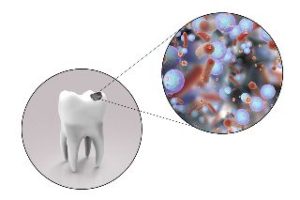An Emergency Dentist in Yakima Explains What a Cavity Feels Like
July 13, 2018
 How do you know when you have a cavity? Is it sensitive to hot and cold – or does it cause severe pain? And, furthermore, how do you know when to seek immediate care from an emergency dentist in Yakima? You don’t want to drop everything from your busy schedule and go in immediately if you don’t need to, but you also want to make sure you get the care you need. If you suspect you have a cavity, it’s hard to know what you should do. This blog will clear up your confusion so you know what a cavity feels like – and when it’s time to get dental care for it!
How do you know when you have a cavity? Is it sensitive to hot and cold – or does it cause severe pain? And, furthermore, how do you know when to seek immediate care from an emergency dentist in Yakima? You don’t want to drop everything from your busy schedule and go in immediately if you don’t need to, but you also want to make sure you get the care you need. If you suspect you have a cavity, it’s hard to know what you should do. This blog will clear up your confusion so you know what a cavity feels like – and when it’s time to get dental care for it!
What Is a Cavity?
Teeth are made of minerals such as calcium and phosphorous that make them extremely hard and tough. In fact, enamel is the hardest substance in your body. But, although your teeth are extremely strong, they’re not indestructible.
The biggest threat your teeth is the acid that’s naturally produced in your mouth after meals (particularly meals high in sugar). This acid wears away at the minerals in the teeth, causing them to become soft or decayed – this is what’s called a cavity.
When you have a cavity, a dentist determines how much of your tooth has been damaged and uses that information to decide which treatment would be appropriate.
What Does a Cavity Feel Like?
This depends on how large a cavity is and how close it’s gotten to the nerve in the inner layer of the tooth. Small cavities that are only in the outer layer (called enamel) often don’t cause any pain at all.
Medium-sized cavities that have reached the middle layer of the tooth (called dentin) may cause the following symptoms:
- Hot or cold sensitivity
- Pain from chewing or other pressure
- Sensitivity when eating sweet foods
- Any discoloration on the tooth
Large cavities that have infected the innermost layer of the tooth (called the pulp or nerve canal) will usually cause severe pain and/or an abscess. Additional symptoms might be a pimple–like bump on the gums or facial swelling.
A good rule of thumb is that anytime you have pain that lingers, call a dentist right away. You might need emergency care to prevent the infection from growing or spreading to the other areas of the body, which can be very dangerous.
How Are Cavities Treated?
Every situation is unique, but here are some common treatments for each stage of decay:
- Small cavities – These types of cavities can usually be treated with a small filling.
- Medium cavities – In some cases, medium cavities can be treated with a large filling, although they may require a crown if too much of the tooth structure has been damaged.
- Large cavities – Large cavities usually need a root canal in Yakima to remove the infected pulp. Since the blood supply of the tooth is also removed, the tooth becomes brittle, so a crown is often recommended to restore the tooth’s strength. Antibiotics may also be prescribed.
Hopefully, you never develop a toothache. But if you do, you’ll know how to handle it with these guidelines!
About the Author
Dr. Lyle Bonny is a general and emergency dentist in Yakima with over 30 years of experience. When patients have a cavity or toothache, he always carefully evaluates them so he can recommend the most conservative treatment possible. If you have any questions, he can be reached via his website or at (509) 248-4957.
No Comments
No comments yet.
RSS feed for comments on this post.
Sorry, the comment form is closed at this time.